The ubiquitous H Van was not the only utility vehicle produced by Citroën.
Citroën have long built commercial vehicles, and continue to do so to this day. Over the years, the van range has covered a wide range of sizes and purposes – some based directly on cars, others not. This article does not describe those models most obviously closely related to the cars, as those are covered on the pages describing those cars.
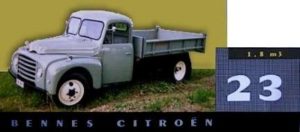
RWD – Pre-war
In the 1920s & 1930s, the designs were largely a matter of a different body and, where necessary, scaling up the RWD car chassis. As well as vans, trucks and buses were produced – with the Citroën company using their own buses to run one of the largest bus services in Europe for many years. As the car designs became more sophisticated, especially with the launch of the Traction Avant, differentiation started to set in but the basic family of RWD vehicles with designs traceable to before the war remained in production until the 1950s.
TUB – 1939-1941
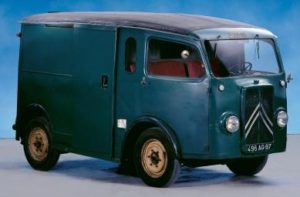
The TUB (Traction Utilitaire Basse) was based upon the mechanical layout of the Traction Avant, but with a body remarkably modern in layout, including what is understood to be the first sliding side door on a commercial vehicle. It was short-lived, due to factors outside Citroën’s control, being launched in 1939. Production continued until 1941, with around 1,800 vans being produced (poor records were kept after 1940, when France fell under occupation). As well as the 850kg payload, 7cv (1628cc) engined TUB, there was an 1100kg payload, 11cv (1911cc) version, the TUC. However, it is the name of the smaller van which has stuck to describe the entire range.
H-van – 1947-1981

The H-van is described in more detail in a separate article.
Belphegor 350-850 série N & P – 1965-1972
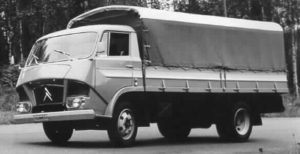
The Belphegor. Truly unique. Take a fairly conventional range of RWD truck chassis (including 4×4 and articulated versions), covering the 3.5t to 8t weight range, add the high-pressure zero-pedal travel hydraulic brake circuit from the DS, and a very unusual cab styled by Flaminio Bertoni (the Italian sculptor responsible for the Traction, Ami 6 & DS amongst others). The Belphegor was never officially known as such – the badging was strictly functional, related to the GVW of the truck – the familiar name was adopted from a popular TV series of the time about a phantom who haunted the Louvre museum…
K (Berliet K) – 1969-1975
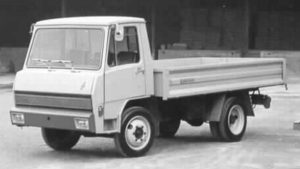 The last ‘proper truck’ from Citroën, and the last RWD Citroën, the K was a Berliet through-and-through. Citroën bought Berliet in 1967, and the K (available with a Berliet badge, a Citroën badge, or for two years with Citroën-Berliet badging, but otherwise identical) was merely an update of Berliet’s existing smaller truck chassis with a forward-control cab very similar to the engine-first Stradair range of larger trucks, released in 1965. The K left Citroën with the rest of Berliet in 1975, to join with Saviem and form Renault Vehicule Industriel.
The last ‘proper truck’ from Citroën, and the last RWD Citroën, the K was a Berliet through-and-through. Citroën bought Berliet in 1967, and the K (available with a Berliet badge, a Citroën badge, or for two years with Citroën-Berliet badging, but otherwise identical) was merely an update of Berliet’s existing smaller truck chassis with a forward-control cab very similar to the engine-first Stradair range of larger trucks, released in 1965. The K left Citroën with the rest of Berliet in 1975, to join with Saviem and form Renault Vehicule Industriel.
C35 (Fiat 242) – 1974-1992
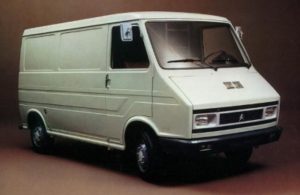 A strictly conventional large van, larger and more capable than the H-van, which was starting to show it’s age by the time the C35 joined it in Citroën’s range. Developed jointly with Fiat during the period a full takeover by the Italians looked Citroen’s most likely future, the C35 (and smaller-engined C32) was built in Italy, although production was outsourced to Chausson in France late in the life of the model.
A strictly conventional large van, larger and more capable than the H-van, which was starting to show it’s age by the time the C35 joined it in Citroën’s range. Developed jointly with Fiat during the period a full takeover by the Italians looked Citroen’s most likely future, the C35 (and smaller-engined C32) was built in Italy, although production was outsourced to Chausson in France late in the life of the model.
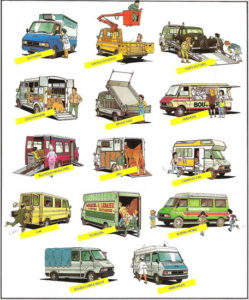
C25 (Peugeot J5, Talbot Express, Fiat Ducato, Alfa Romeo AR6) – 1981-1993

The first larger Citroën van to officially be sold in the UK, the C25 replaced the H-van and squarely took on the ubiquitous Ford Transit. The C25 became a common sight in the UK, and although the van versions have all but died out now, the transverse-FWD layout at a time when most rivals were RWD meant that motorhome conversions were popular. Bearing several different marques over the years – the UK was the only country to have the Talbot badge, whilst we didn’t see the Peugeot or (Italy-only) Alfa badges, the C25 was also the first product from the Sevel joint venture, established to continue the links between PSA and Fiat.
Jumper/Relay I (Peugeot Boxer, Fiat Ducato) – 1993-2006
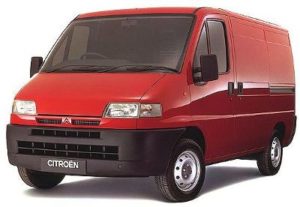 The replacement for the C25 grew a bit in size, and gained a name instead of a number. There must have been some strange expressions in Slough when the name – Jumper – was first announced, so the UK announcement saw a change of badge – although why it was replaced with a name inextricably connected to a breakdown recovery service was felt appropriate is another question.
The replacement for the C25 grew a bit in size, and gained a name instead of a number. There must have been some strange expressions in Slough when the name – Jumper – was first announced, so the UK announcement saw a change of badge – although why it was replaced with a name inextricably connected to a breakdown recovery service was felt appropriate is another question.
If the C25 had been a great introduction for the marque to the UK commercial vehicle market, the replacement was an even better introduction for the Peugeot brand, putting the final nail in the coffin of the last remaining Rootes brand.
Jumpy/Dispatch I (Peugeot Expert, Fiat Scudo) – 1997-2007
 If naming a van after knitwear seemed slightly odd to Slough, implying that the smaller sibling suffered badly from nerves must’ve appeared to be even more of a marketing challenge. Another re-badge, then. Could have been worse. The Citroën Cardigan?
If naming a van after knitwear seemed slightly odd to Slough, implying that the smaller sibling suffered badly from nerves must’ve appeared to be even more of a marketing challenge. Another re-badge, then. Could have been worse. The Citroën Cardigan?
Another Sevel product, coming between the Berlingo and Relay in size, the Dispatch begs a big question – Is it car-related or not? The Synergie/Evasion people carrier was also a product of Sevel, and bears strong resemblances in size and some aspects of the styling, but differs markedly in others. Just to confuse matters, the van was the basis for the ‘EuroTaxi’, an attempt to move the van-based minibus to rival London’s traditional black cabs.
Jumper/Relay II (Peugeot Boxer, Fiat Ducato) – 2006-
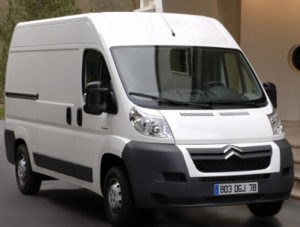 The success of the Relay/Jumper made replacement a hard act, but the Sevel joint venture stepped up to the mark again.The replacement had grown slightly, with a larger selection of body sizes available. The styling echoed strongly the ‘pouting lip’ seen on the C1 – making the first two examples of this new corporate look the largest and smallest of the range.
The success of the Relay/Jumper made replacement a hard act, but the Sevel joint venture stepped up to the mark again.The replacement had grown slightly, with a larger selection of body sizes available. The styling echoed strongly the ‘pouting lip’ seen on the C1 – making the first two examples of this new corporate look the largest and smallest of the range.
The FWD base and availability of chassis-cab versions means that, as with the predecessors, coach-built motorhome versions are again common.
Because of Fiat’s relationship with Chrysler in the US, the van (sold in Mexico as the Peugeot Manager) is likely to be the first official import of a PSA vehicle to the US since the mid ’70s – under Chrysler’s RAM brand.
Jumpy/Dispatch II (Peugeot Expert, Fiat Scudo) – 2007-
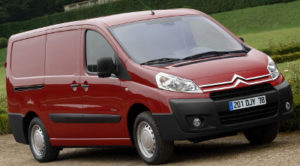 With the growth in size of the larger vans, the second-generation Jumpy/Dispatch has grown to roughly the size of the C25. As with the bigger Jumper/Relay, the second generation has brought a wider range of sizes. The origins have moved away from the people-carriers, and the van has developed a distinct identity. Again, taxi and minibus versions are popular.
With the growth in size of the larger vans, the second-generation Jumpy/Dispatch has grown to roughly the size of the C25. As with the bigger Jumper/Relay, the second generation has brought a wider range of sizes. The origins have moved away from the people-carriers, and the van has developed a distinct identity. Again, taxi and minibus versions are popular.


